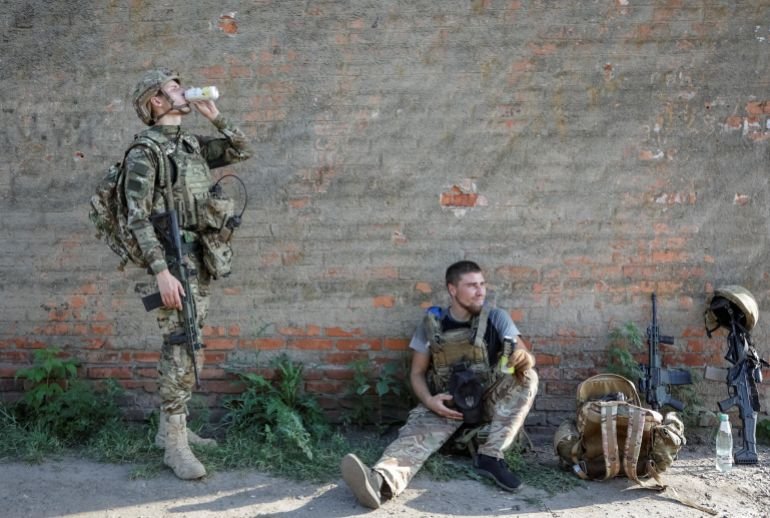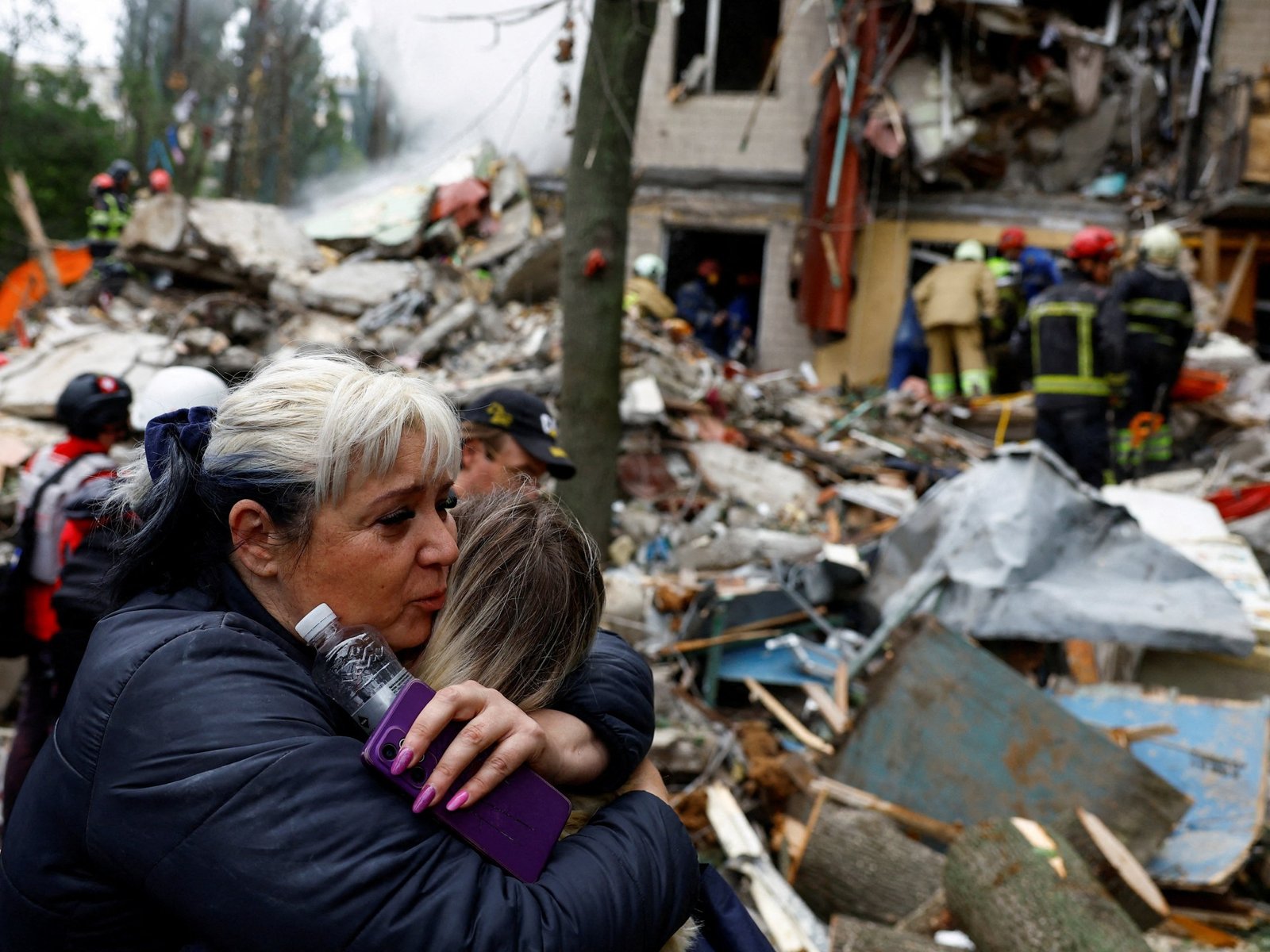In a challenging week for Ukraine during its ongoing conflict, Russian forces successfully seized control of Chasiv Yar, a strategic high point in the eastern Donetsk region. They also reported advancements towards the northern city of Kupiansk, which had a pre-war population of over 26,000, located in Kharkiv.
These victories come after months of costly military engagements for Russia, involving significant losses of personnel and equipment.
Concurrently, Russian troops launched incursions into Dnipropetrovsk, having breached its borders during the weekend of June 7-8. They captured the village of Sichneve, known as Yanvarskoye by Russian forces—marking the third claimed take-over in this region, following Dachnoye and Malynivka.
Russia has also escalated its aerial attacks, deploying jet-powered drones to devastating effect, resulting in the deaths of 31 individuals in Kyiv on July 31.
In retaliation, Ukraine intensified its strikes on Russian supply lines and energy facilities.
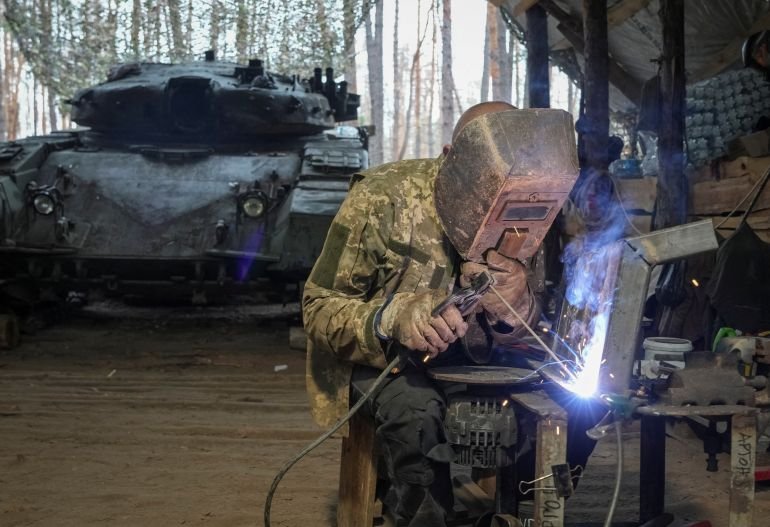
Chasiv Yar and the Strategic ‘Fortress Belt’
According to the Russian Ministry of Defence, paratroopers captured Chasiv Yar on July 31.
Russia initiated its assault on Chasiv Yar in March 2024, shortly after the capture of Avdiivka approximately 30 kilometers to the south had released additional troops for offensive maneuvers.
This area gained strategic importance following the fall of Bakhmut in May 2023, after a protracted struggle led by Wagner Group mercenaries.
With Bakhmut under their control, Russian forces have expanded their reach, but Chasiv Yar represents both a challenging objective due to its defensive canal and a coveted observation point for monitoring free areas of Donetsk.
“Chasiv Yar is critical for adjusting observation and conducting military operations,” noted military analyst Vitaly Kiselyov on the Soloviev Live network in Russia.
“It appears we will be maneuvering to outflank enemy positions, leveraging our newly acquired vantage point,” Kiselyov added.
Another military expert explained that capturing Chasiv Yar enables Russian forces to advance toward the heavily fortified “fortress belt” of Ukrainian cities.
Chasiv Yar is positioned at the northern tip of an attempted encirclement around Kostiantynivka, and on Saturday, Russian officials claimed the capture of Aleksandro-Kalinovo, situated at the southern end of this encirclement.
However, some analysts argue the fall of Chasiv Yar is overstated in its significance.
The Institute for the Study of War (ISW), based in Washington, stated that while Russian troops have controlled parts of northern Chasiv Yar since early 2025, their advancements in the southwestern area don’t significantly alter the operational landscape.
They emphasized that Ukrainian supply lines remain secure, as Russian forces have not threatened crucial logistics routes along the T-0504 highway for an extended period.
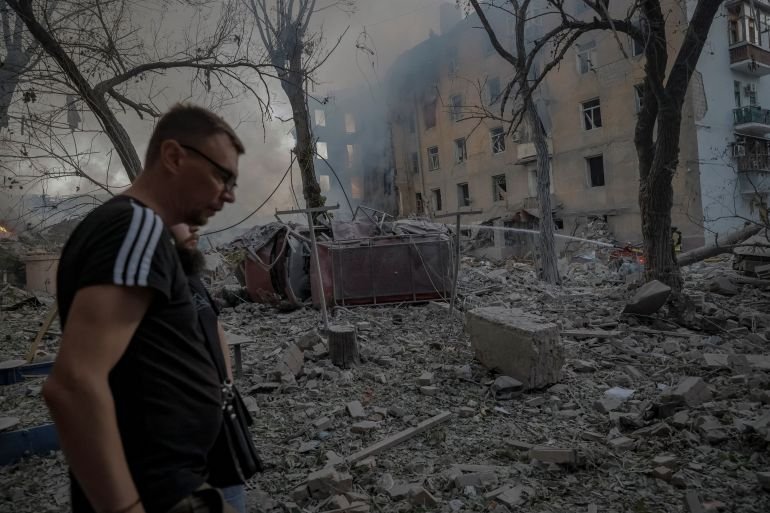
In contrast, the situation in Pokrovsk, approximately 35 kilometers southwest of Chasiv Yar, is markedly different, as Russian forces have besieged this area as well.
Denis Pushilin, leader of the self-proclaimed Donetsk People’s Republic, asserted that Ukrainian supply lines in Pokrovsk have been severely disrupted.
Ukrainian Commander-in-Chief Oleksandr Syrskii reported on Telegram, “The most dire circumstances exist in the Pokrovsk, Dobropillia, and Novopavlivka sectors, with Russian forces intensifying their attempts to capture key areas.”
He described Russian attempts to establish sabotage units behind Ukrainian lines, leading to heightened defensive operations by Ukraine.
Kupiansk and the Proposed ‘Buffer Zone’
In the north, Russian claims indicate they have advanced into Kupiansk, where urban combat is reportedly taking place.
Military expert Andrey Marochko told TASS that Russian troops are utilizing small, mobile units for targeted strikes in Ukraine.
These operations extend beyond the four regions that Russia unilaterally annexed in September 2022—Luhansk, Donetsk, Zaporizhia, and Kherson.
Russia seeks to establish a buffer zone to safeguard these territories, a claim that Ukraine disputes, viewing it as a pretext for continued occupation.
While some low-ranking Russian officials have suggested a buffer zone depth of 30 kilometers, no official directive has codified this measure.
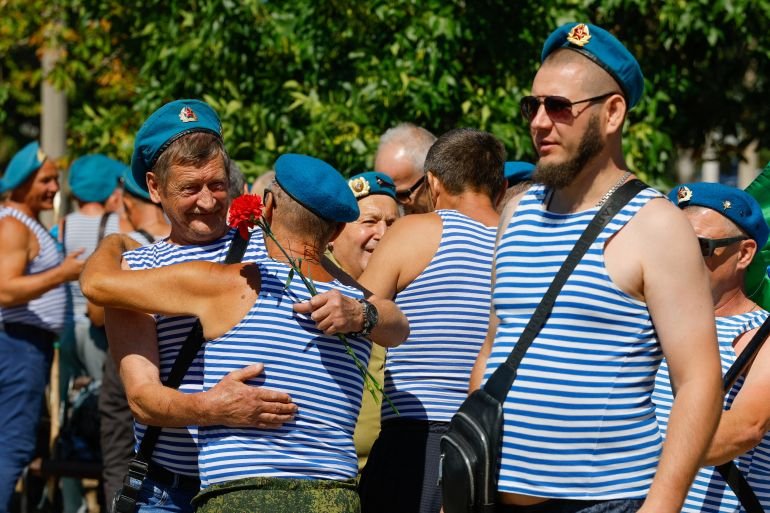
Moscow’s long-range attacks persist, including a drone strike on July 31 that resulted in 31 fatalities in Kyiv. Ukrainian Interior Minister Ihor Klymenko indicated that Russia employed fast-moving jet-powered drones that are tough to intercept.
The Ukrainian Air Force reported multiple missile launches and drone attacks, prompting UK Prime Minister Keir Starmer to denounce the strikes as “absolutely vile and brutal.”
The Escalating Verbal Conflict
As these offensives continue, Russian President Vladimir Putin claimed Ukraine is unprepared for peace negotiations.
In a joint conference with Belarusian President Alexander Lukashenko, Putin remarked, “We are willing to wait if Ukrainian leadership believes now isn’t the right time,” reflecting on the stalled discussion despite multiple attempts at a ceasefire.
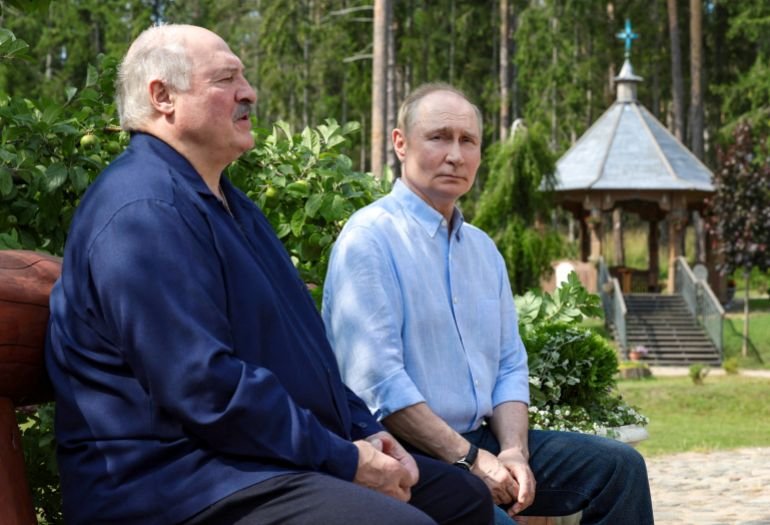
In Washington, U.S. President Donald Trump expressed disappointment in Putin, emphasizing support for Ukraine and approving additional military aid.
The Pentagon announced plans to supply Ukraine with Advanced Medium-Range Air-to-Air (AMRAAM) missiles.
Trump also engaged in a social media conflict with Dmitry Medvedev, who criticized Trump’s proposed deadline for a ceasefire agreement.
Furthermore, Trump declared he would position two nuclear submarines strategically, cautioning against any further provocations from Russia.
Additionally, he announced a significant tariff on India for purchasing Russian oil, asserting that such actions fuel the war effort.
Ukraine’s Counteroffensive Operations
As the conflict persists, Ukraine has ramped up its attacks targeting Russian transport and energy infrastructure.
On July 31, Russia claimed to have intercepted numerous Ukrainian UAVs, delaying rail operations in the Volgograd region.
Ukraine’s strategy has focused on disrupting Russian railways crucial for supplying the front lines, as reported by open-source intelligence group Frontelligence Insight.
Notable strikes included attacks on a radio factory in Penza that produces military-grade equipment.
Ukraine launched extensive strikes on various sites, including an oil refinery responsible for a significant portion of Russia’s refining capacity, and military storage facilities.
Recent explosions have even affected the main gas pipeline from Turkmenistan to Russia, which supports military manufacturing.
